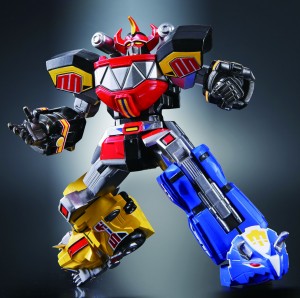I came across an interesting series of articles on tokusatsu series in the English version of the Japanese newspaper Asahi Shimbun.
The first article focuses on Ultraman, and discusses a situation rather familiar to fans of certain popular geek franchises here in the States:
The renewed popularity of TV shows spawned 45 years ago also depends to a large extent on the adults who watched them as children. Many have attained senior corporate positions that allow them to give the green lights to company projects that try to recapture the past and nostalgia. […]
However, the studio is struggling to capitalize on the surging popularity of the old shows to create new series with all the latest special effects.
One of the more recent franchises, starting with the 1996 “Ultraman Tiga,” dubbed “Heisei Ultraman series” because it aired in the current Heisei Era that began in 1989, consistently drew low audience ratings. There have been no shows featuring a new Ultraman since 2007.
As someone who started watching the vintage Ultraman show this year and has been buying the Showa-era Ultra-Acts, I can speak to the appeal of the vintage stuff. That said, Belial from one of the recent Ultraman movies is pretty cool too (even if he’s basically Space Carnage).
The second article discusses the importance of merchandising, specifically toys, to keeping these franchises solvent:
Explaining the company’s 45-year history in the genre, Toei’s senior managing director, Takeyuki Suzuki, said: “It’s because we have a business model in which royalties from toy sales are plowed back into production funds.” […]
To bolster the appeal of the toys, Toei spends seven or so months to develop character settings and designs for the action hero. After a show airs, a new robot is introduced at three-month intervals.
Obviously, this is very similar to what goes on here in the States, but there seems to be more of a cultural squeamishness about the whole thing, going back to the flood of toy-based properties in the 1980s and the flood of criticism that ensued from many parental watchdog groups.
Of course, to be fair many of those shows were absolutely guilty of being wafer-thin half-hour commercials. Japan seems to have recognized from early on that even if one of your major goals is to sell toys, you still have to put some actual thought and development into the program.



consultant
I found this is an informative and interesting post so i think so it is very useful and knowledgeable. I would like to thank you for the efforts you have made in writing this post.
The_Fun_has_been_Dou
I'm not saying any names, but some Western toy companies COULD Learn from this…